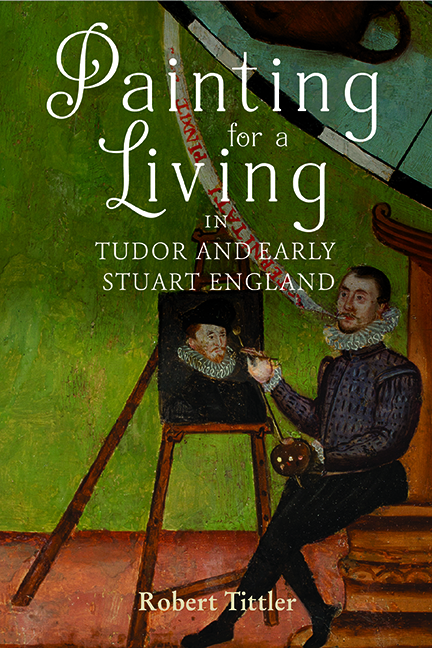Book contents
- Frontmatter
- Dedication
- Contents
- List of Illustrations
- Preface
- Acknowledgements
- Editorial Conventions and Abbreviations
- Part I Introduction
- Part II Kinds of People
- Part III Particular Specialities
- Part IV Ways and Means
- Part V Conclusion
- Bibliography
- Index
- STUDIES IN EARLY MODERN CULTURAL, POLITICAL AND SOCIAL HISTORY
- Frontmatter
- Dedication
- Contents
- List of Illustrations
- Preface
- Acknowledgements
- Editorial Conventions and Abbreviations
- Part I Introduction
- Part II Kinds of People
- Part III Particular Specialities
- Part IV Ways and Means
- Part V Conclusion
- Bibliography
- Index
- STUDIES IN EARLY MODERN CULTURAL, POLITICAL AND SOCIAL HISTORY
Summary
Of all the sub-species of the painting genus, the glass painting of this era proved more distinctive, and arguably more vulnerable to the influence of broad historical movements, than virtually any other. It also required a skill set of its own, some components of which were unique to its practitioners. In all, while some painters-of-all-work, and certainly some arms painters, may have painted on glass at one time or another, glass painting itself remained a more distinct and specialized craft. Despite its very considerable significance in pre-Reformation times, its revival in the early seventeenth century, and its close ties with such other visual crafts as heraldic drawing and painting, glass painting is also distinctive for somehow managing to escape the level of scholarly attention accorded to the other painting genres. It is profoundly ironic, as Sarah Brown and David O’Connor have noted, that glass painters, ‘working in a medium which … is concerned with light, should end up in relative obscurity’.
A number of factors contribute to this neglect. Part of it may have to do with the large proportion of painted glass which consisted of arms painting and which, as we have seen, has also failed to garner much of a place in the art historical canon. A large part no doubt has to do with the destruction of so much stained glass itself during and after the Reformation, so that its physical remains cannot be studied as well as one would like to do. And part no doubt lies in the misleading assumption that ‘stained’ glass was not painted at all, but rather consisted of intricate designs made from individual pieces of pre-coloured glass. Yet this was rarely the case. Almost all English-made glass was white; some foreign glass was red and occasionally other colours. But at least in England, nearly all the other colours in ‘stained’ glass were painted on in one way or another.
One also tends to assume that ‘stained’ glass painting, not to mention ‘glaziers’ themselves, remained occupationally distinct from other painting specialities. To this there is some truth, though the craft of ‘glazing’ had always involved elements of drawing and painting, and would continue to do so.
- Type
- Chapter
- Information
- Painting for a Living in Tudor and Early Stuart England , pp. 139 - 156Publisher: Boydell & BrewerPrint publication year: 2022



